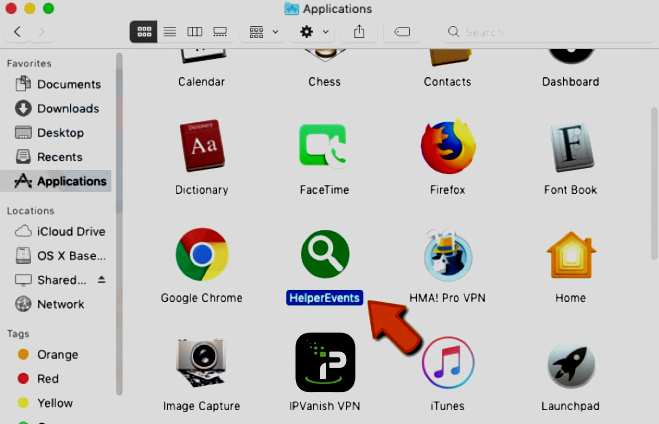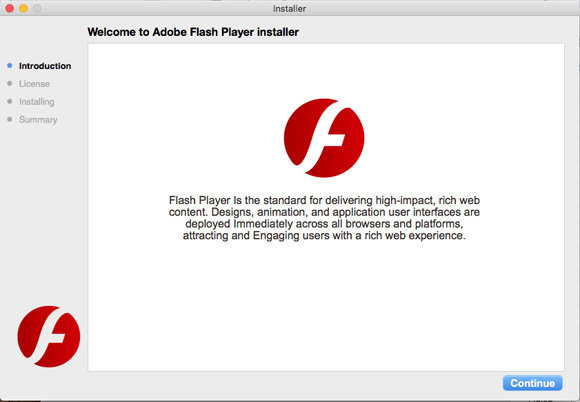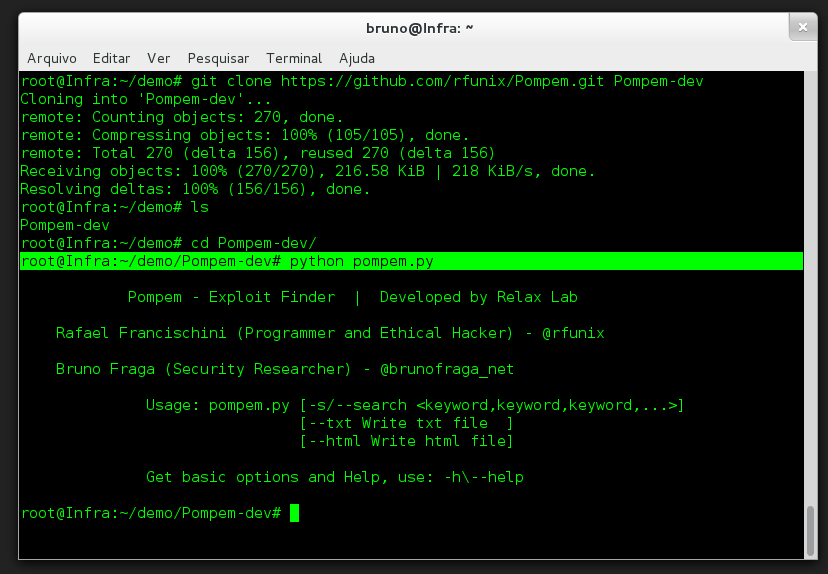How to remove BufferKey adware from Mac computers. What is BufferKey? BufferKey is an adware-type application that possesses certain traits common to browser hijackers.It operates by running intrusive ad campaigns and modifying browser settings to promote a fake search engine. Adware mac free download - Bitdefender Adware Removal Tool, AdWare, Adware Removal Pro, and many more programs. I decided to check out Adware Zap, read the reviews and thought it would be a good idea to download. I'm happy I did. The app found 30 adware extensions and most of them were from MacKeeper which I had deleted a few months ago after installing a different security app for my Mac. It found daemon extensions that I didnt even know where on my.
Short bio
Adware.OperatorMac is Malwarebytes' detection name for an adware family that uses various techniques to infect MacOS systems.
Malicious behavior
Adware.OperatorMac has been around since at least 2015 and has used every known way to get their advertisements shown on affected systems. Recent variants of Adware.OperatorMac have been observed using the open-source mitmproxy software to proxy all http and https traffic for the purpose of ad injection.
Protection
Malwarebytes for Mac detects and removes Adware.OperatorMac.
Remediation
Malwarebytes for Mac will detect and remove the components of this malware.
Download and install the latest version of Malwarebytes for Mac.
Click the 'Scan Now' button to perform a system scan.
If threats are detected during the scan, a count of detected threats is displayed. More detailed threat information is displayed after the scan completes.
Click 'Confirm' to move the detected threats to Quarantaine.
If a restart is required to complete remediation of threats detected during a scan, you will be notified. When a restart is required, please remember to save all work before clicking 'Restart'.
What is Adware.MAC.OSX.Pirrit?

Adware.MAC.OSX.Pirrit is an adware infection. Adware refers to unwanted applications that generate revenue for their creators by displaying advertisements on users' computers. Adware is most commonly installed using a deceptive software marketing method called ‘bundling'. Users are tricked into believing that they are downloading a Flash Player update, or other popular free software, but often do not notice other unwanted applications attached to the installation steps of the software they initially downloaded. By not paying enough attention to installation steps, many users inadvertently install adware onto their systems.
Adware comes in many forms such as fake Chromium-based browsers, weather forecast widgets, toolbars, etc. The behaviour of adware applications often varies. Some bombard Internet browsers with pop-up ads, whilst others stealthily track users' browsing behaviour and send the recorded information to advertisers. Some might add a ‘virtual layer' to websites that users visit and display additional banner ads.
How to know if your Mac is infected with adware?
- Pop-up ads appear while browsing the Internet. Although this could be normal, look for pop-up ads that seem out of place or inappropriate – for example, a pop-up ad opens when visiting Google.com.
- Your Internet browsers have slowed down (most adware programs are poorly programmed and their presence significantly reduces browser performance).
- Legitimate websites show dubious ads. Adware applications use a ‘virtual layer' over everyday legitimate sites to display various ads. For example, you should be suspicious if you visit google.com and see banner ads promoting gambling or adult content.
- You see new extensions or toolbars that you did not install. Adware applications commonly install various toolbars and browser add-ons that redirect users to specific Internet searches or display advertisements. For example, rather than going through google.com, Internet searches are redirected to yahoo.com or bing.com.
Appearance of a fake Flash Player update pop-up distributing adware infections:
How did Adware.MAC.OSX.Pirrit install on my Mac?
The most common source of adware infections are free. software download websites, fake Flash Player updates, and torrent download sites. For example, after downloading a popular player from a software download website, users might rush through the installation steps not noticing that they are, by default, agreeing to install various toolbars and other adware together with the downloaded app.
Owners of download websites add a ‘download agent' or ‘custom installer' that 'offers' (sometimes in a very deceptive way) installation of additional applications (most commonly, adware) together with the downloaded free software. Deceptive pop-up ads are another common source of adware used to trick users into downloading supposedly useful apps (for example, weather forecast widgets). In fact, the main purpose of these apps is to display ads and generate revenue for their developers.
Appearance of a deceptive free software installer that is bundling adware infections:
How to avoid installation of adware?

To minimise the chances of Mac infection by adware, download free, software from developers' websites only. Do not search for software cracks or use Torrent websites. Never trust Internet pop-up ads asking you to update software (for example, Flash or Java) – these ads are often part of a scam and you will download trojans and adware, rather than any software update. When installing free software, be attentive and check all advanced/expert installation options, since these might reveal potential installation of adware.
Automatic Adware.MAC.OSX.Pirrit removal:
Manual adware removal can be a lengthy and risky process that involves removing files from various locations on the system. Combo Cleaner is award-winning Mac antivirus software that can detect and remove Adware.MAC.OSX.Pirrit automatically. Click the button below to download Combo Cleaner:
Download Combo Cleaner Now
Free Scanner checks if your computer is infected. To remove threats, you have to purchase the full version of Combo Cleaner
Manual Adware.MAC.OSX.Pirrit removal:
1. Click on any blank space on your desktop, then select 'Go' from the top menu.
2. Select 'Go to folder'…
In the opened window, individually paste the lines shown below. In the opened folders, look for adware generated files and remove them. Look for recently-added files that seem out of place. Here are some examples of malware generated files: 'com.MyMacUpdater.agent.plist', 'com.MyShopcoupon.agent.plist', etc.
Here's a list of folders commonly used by adware infections:
Manually Remove Adware From Mac
- /Library/LaunchAgents
- /Library/Application
- ~/Library/LaunchAgents
- /Library/LaunchDaemons
Here's a sample of how a folder with adware files looks like:
Adware removal using Activity Monitor:
Backyard basketball full download. The latest version of Backyard Basketball 2007 is 1 on Mac Informer. It is a perfect match for the Games category. The app is developed by Humongous Entertainment. Backyard Basketball (Mac abandonware from 2001) To date, Macintosh Repository served 1275181 old Mac files, totaling more than 244458.3GB!
1. Open you Launchpad, select 'Other', in the opened list select 'Activity Monitor'.

Adware.MAC.OSX.Pirrit is an adware infection. Adware refers to unwanted applications that generate revenue for their creators by displaying advertisements on users' computers. Adware is most commonly installed using a deceptive software marketing method called ‘bundling'. Users are tricked into believing that they are downloading a Flash Player update, or other popular free software, but often do not notice other unwanted applications attached to the installation steps of the software they initially downloaded. By not paying enough attention to installation steps, many users inadvertently install adware onto their systems.
Adware comes in many forms such as fake Chromium-based browsers, weather forecast widgets, toolbars, etc. The behaviour of adware applications often varies. Some bombard Internet browsers with pop-up ads, whilst others stealthily track users' browsing behaviour and send the recorded information to advertisers. Some might add a ‘virtual layer' to websites that users visit and display additional banner ads.
How to know if your Mac is infected with adware?
- Pop-up ads appear while browsing the Internet. Although this could be normal, look for pop-up ads that seem out of place or inappropriate – for example, a pop-up ad opens when visiting Google.com.
- Your Internet browsers have slowed down (most adware programs are poorly programmed and their presence significantly reduces browser performance).
- Legitimate websites show dubious ads. Adware applications use a ‘virtual layer' over everyday legitimate sites to display various ads. For example, you should be suspicious if you visit google.com and see banner ads promoting gambling or adult content.
- You see new extensions or toolbars that you did not install. Adware applications commonly install various toolbars and browser add-ons that redirect users to specific Internet searches or display advertisements. For example, rather than going through google.com, Internet searches are redirected to yahoo.com or bing.com.
Appearance of a fake Flash Player update pop-up distributing adware infections:
How did Adware.MAC.OSX.Pirrit install on my Mac?
The most common source of adware infections are free. software download websites, fake Flash Player updates, and torrent download sites. For example, after downloading a popular player from a software download website, users might rush through the installation steps not noticing that they are, by default, agreeing to install various toolbars and other adware together with the downloaded app.
Owners of download websites add a ‘download agent' or ‘custom installer' that 'offers' (sometimes in a very deceptive way) installation of additional applications (most commonly, adware) together with the downloaded free software. Deceptive pop-up ads are another common source of adware used to trick users into downloading supposedly useful apps (for example, weather forecast widgets). In fact, the main purpose of these apps is to display ads and generate revenue for their developers.
Appearance of a deceptive free software installer that is bundling adware infections:
How to avoid installation of adware?
To minimise the chances of Mac infection by adware, download free, software from developers' websites only. Do not search for software cracks or use Torrent websites. Never trust Internet pop-up ads asking you to update software (for example, Flash or Java) – these ads are often part of a scam and you will download trojans and adware, rather than any software update. When installing free software, be attentive and check all advanced/expert installation options, since these might reveal potential installation of adware.
Automatic Adware.MAC.OSX.Pirrit removal:
Manual adware removal can be a lengthy and risky process that involves removing files from various locations on the system. Combo Cleaner is award-winning Mac antivirus software that can detect and remove Adware.MAC.OSX.Pirrit automatically. Click the button below to download Combo Cleaner:
Download Combo Cleaner Now
Free Scanner checks if your computer is infected. To remove threats, you have to purchase the full version of Combo Cleaner
Manual Adware.MAC.OSX.Pirrit removal:
1. Click on any blank space on your desktop, then select 'Go' from the top menu.
2. Select 'Go to folder'…
In the opened window, individually paste the lines shown below. In the opened folders, look for adware generated files and remove them. Look for recently-added files that seem out of place. Here are some examples of malware generated files: 'com.MyMacUpdater.agent.plist', 'com.MyShopcoupon.agent.plist', etc.
Here's a list of folders commonly used by adware infections:
Manually Remove Adware From Mac
- /Library/LaunchAgents
- /Library/Application
- ~/Library/LaunchAgents
- /Library/LaunchDaemons
Here's a sample of how a folder with adware files looks like:
Adware removal using Activity Monitor:
Backyard basketball full download. The latest version of Backyard Basketball 2007 is 1 on Mac Informer. It is a perfect match for the Games category. The app is developed by Humongous Entertainment. Backyard Basketball (Mac abandonware from 2001) To date, Macintosh Repository served 1275181 old Mac files, totaling more than 244458.3GB!
1. Open you Launchpad, select 'Other', in the opened list select 'Activity Monitor'.
2. In Activity Monitor look for any suspicious process name, when located double click on it.
3. In the opened window click the 'Sample' button. This will open an additional window where you will see a line starting with 'Path:' Select the path of the suspicious process (select the path, then right click your mouse over the selection and click 'copy').
4. Click on any blank space on your desktop, then select 'Go' from the top menu.
5. From the 'Go' menu select 'Go to Folder…', in the opened window paste the path of the suspicious process you copied previously.
6. From the opened folder: drag and drop the file of the suspicious process to your trash can.
Adware Cleaner Mac Download
Some adware applications install unwanted browser extensions that allow them to display unwanted advertisements or redirect users' Internet searches. The next step when dealing with adware infections is removal of rogue browser extensions:
Remove rogue browser extensions from Safari:
Step 1 Open your Safari browser. Click on Safari (top menu) and select 'Preferences' from the list.
Step 2 In the preferences window select 'Extensions' and remove all suspicious extensions by clicking 'Uninstall'.
Remove rogue browser extensions from Google Chrome:
Step 1 Open your Google Chrome browser and click on the three dots symbol. From the opened list select 'More Tools' and then 'Extensions'.
Step 2 In the opened window look for suspicious extensions and click on 'Remove' button next to them.
Remove rogue browser extensions from Mozilla Firefox:
Step 1 Open your Mozilla Firefox browser. Click on the three lines symbol. From the opened list select 'Add-ons'.
Step 2 In the opened window look for suspicious add-ons and remove them by clicking 'Remove' button next to them.
